Mughal-style carved gemstones captured the minds of Art Deco-era designers and are only gaining value with time.
A sense of grandeur and opulence characterized Indian jewelry and decorative objects during the Mughal period, which held sway from the early 16th century through the mid-19th century. Mughal carved gemstones, with their vibrant colors and textures, became a source of inspiration to 20th-century Western jewelry designers, led by Parisian jewelry house Cartier.
In 1901, Pierre Cartier created the first piece showcasing these stones for Queen Alexandra of England, who had commissioned a necklace she could wear with her three Indian gowns. In 1911, his brother Jacques Cartier went to India, allowing him to discover firsthand the richly hued carved rubies, emeralds and other gemstones that highlighted Mughal jewelry. During the 1920s and ’30s, Indian maharajahs traveled to Paris to have their jewels refashioned, adding to the exchange of styles.
“You can trace the genesis back to the 1920s, when Cartier was going to India and buying jewels from the Mughals and wealthy class and then coming back and having their designers fashion the gems into incredible Art Deco jewels for the contemporary buyer of the day,” explains Pat Saling of New York estate-jewelry dealer Pat Saling Ltd.
Cartier premiered the style to the public at the 1925 Paris Exposition Internationale des Arts Décoratifs et Industriels Modernes. And the rest, as they say, is history.
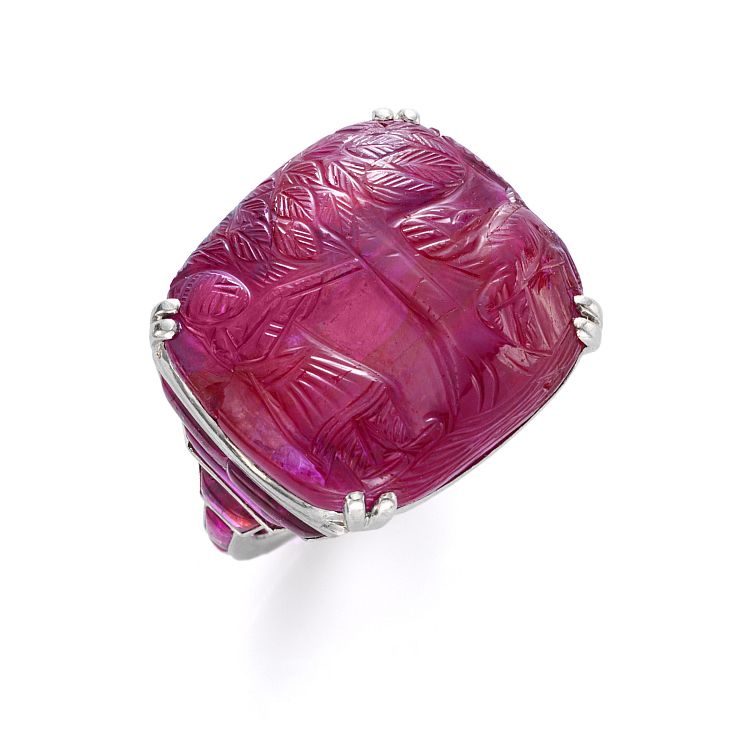
‘A pivotal moment’
Mauboussin and other famed Paris houses created beautiful jewelry during that period as well. The use of these rubies, emeralds and other gems in the shape of leaves, blossoms and berries helped add a textural dimension and a touch of the exotic to the geometric precision of Art Deco jewelry.
“I think the Indian style was a pivotal moment for Western designers,” says Simon Teakle of Simon Teakle Fine Jewelry in Greenwich, Connecticut. “Whether it’s Cartier or David Webb, it immediately draws on the Mughal and Indian influence that really can’t be associated with anything else. There is a thread all the way through.”
These carved jewels have continued to be refashioned, consistently appearing throughout jewelry history in designs such as the impressive carved-ruby necklace by Marchak Paris, which dates from between the 1940s and 1950s, according to Saling.
Extravagant by nature
Along with rubies, emeralds and sapphires, “incredible spinels and other carved gems immediately evoke that Mughal period, which was incredibly opulent and incredibly lavish,” notes Teakle. “I think throughout history, whenever they have been used in a piece of jewelry, large or small, there is that very extravagant feel.”
Engravings included verses from the Koran and names of the emperors who owned the jewels, “as well as lotus blossoms, leaves, fruit or other decorative floral themes, and birds and animals,” he adds.
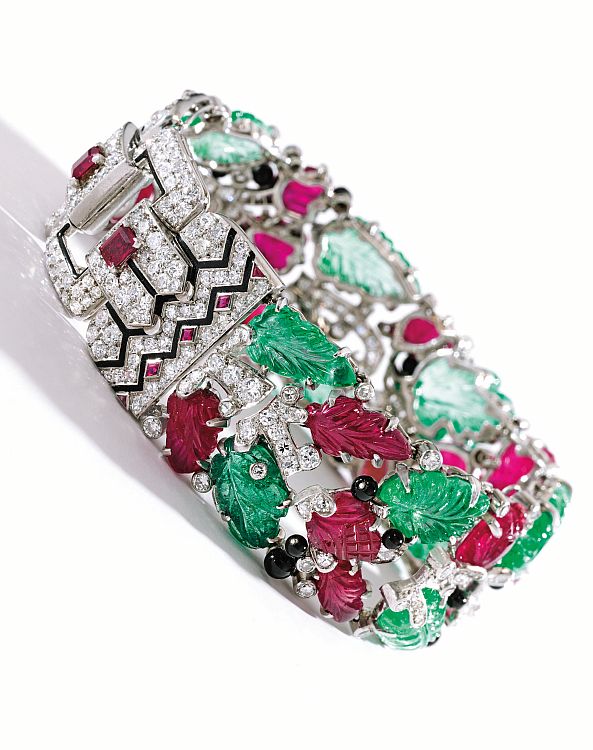
Tutti frutti
Designs featuring these carved stones in colorful patterns became a style known as “tutti frutti.” Plenty of jewelers did it, says Teakle, “but the style is really owned by Cartier.”
Tutti frutti schemes varied the use of the gemstones, favoring one or the other to give each piece an individual look. Some had more rubies, others more emeralds or other gemstones, in combination with diamonds and platinum mountings. Tutti frutti jewelry commands premium prices at auctions, with one piece edging past the $2 million mark in one recent sale.
Lasting appeal
Like anything in the jewelry world, says Teakle, “there are good, bad and indifferent examples of jewelry using
these carved jewels — the good examples always hold up in terms of desirability. The age of the carving is an important factor.”
These jewels have always been a subject of fascination, adds Saling. “It takes a certain amount of sophistication to appreciate them. I would say that if anything, interest has grown,” she says. “The first Cartier bracelet I sold went for around $150,000, and they just continue to climb in value, and now they’re extraordinarily expensive.”
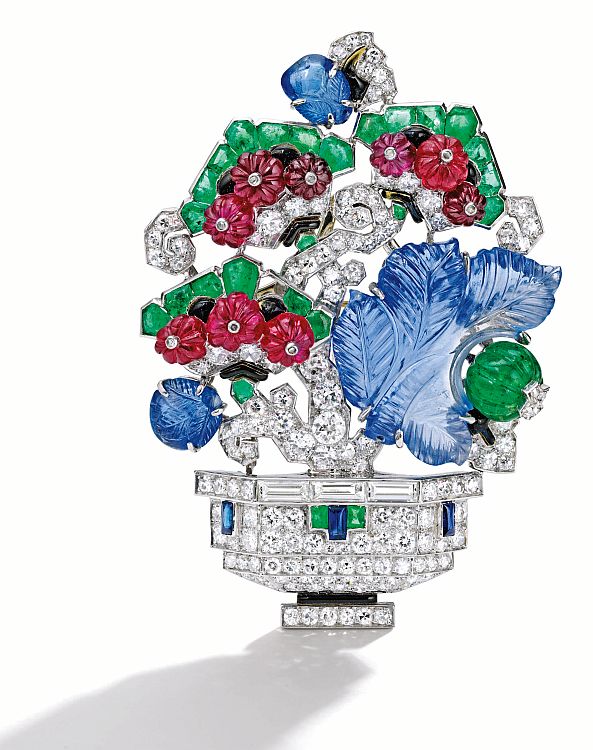
Main image: Ruby and diamond 18-karat yellow gold and platinum-mounted necklace by Marchak Paris, c. 1945-1950, set with numerous carved Burmese rubies interspersed with ruby bead and diamond clusters and accented by an undulating diamond ribbon with a double row of baguette diamonds. Photo courtesy of Pat Saling.

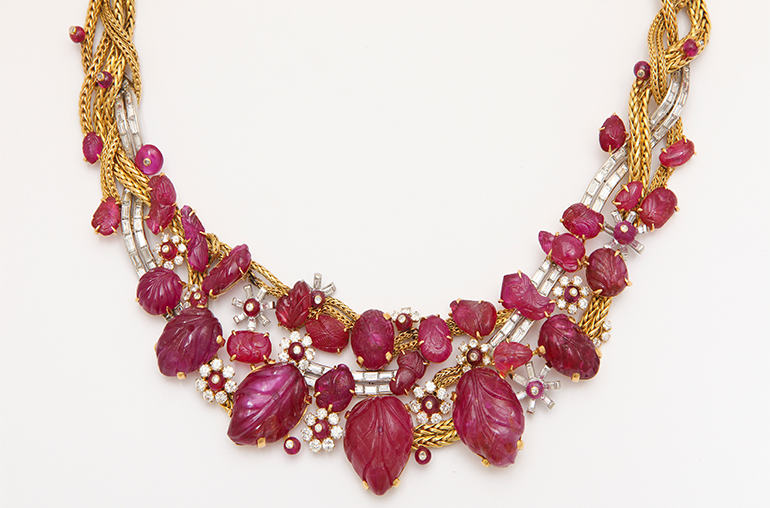
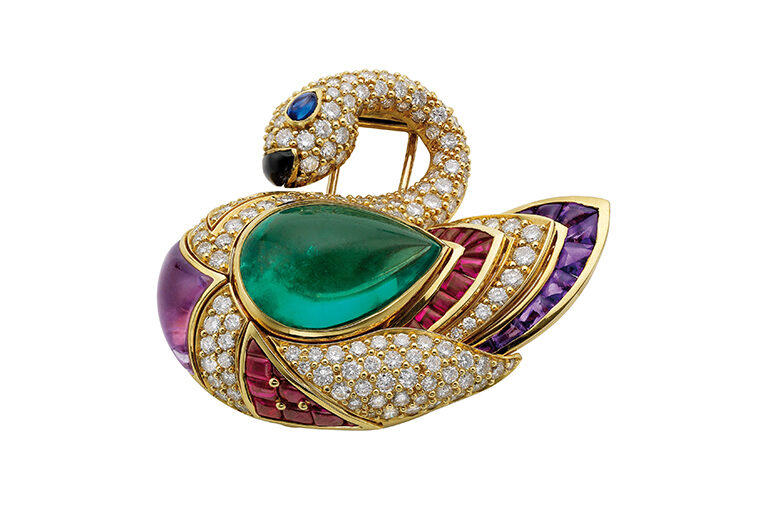
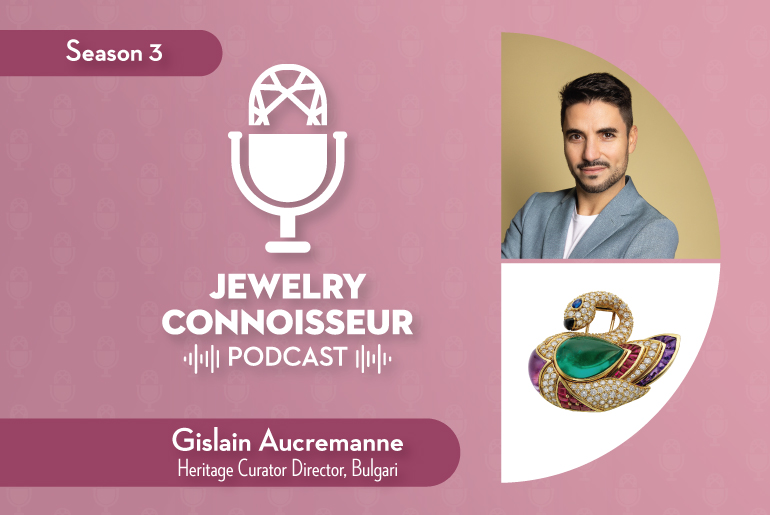

Comments are closed.